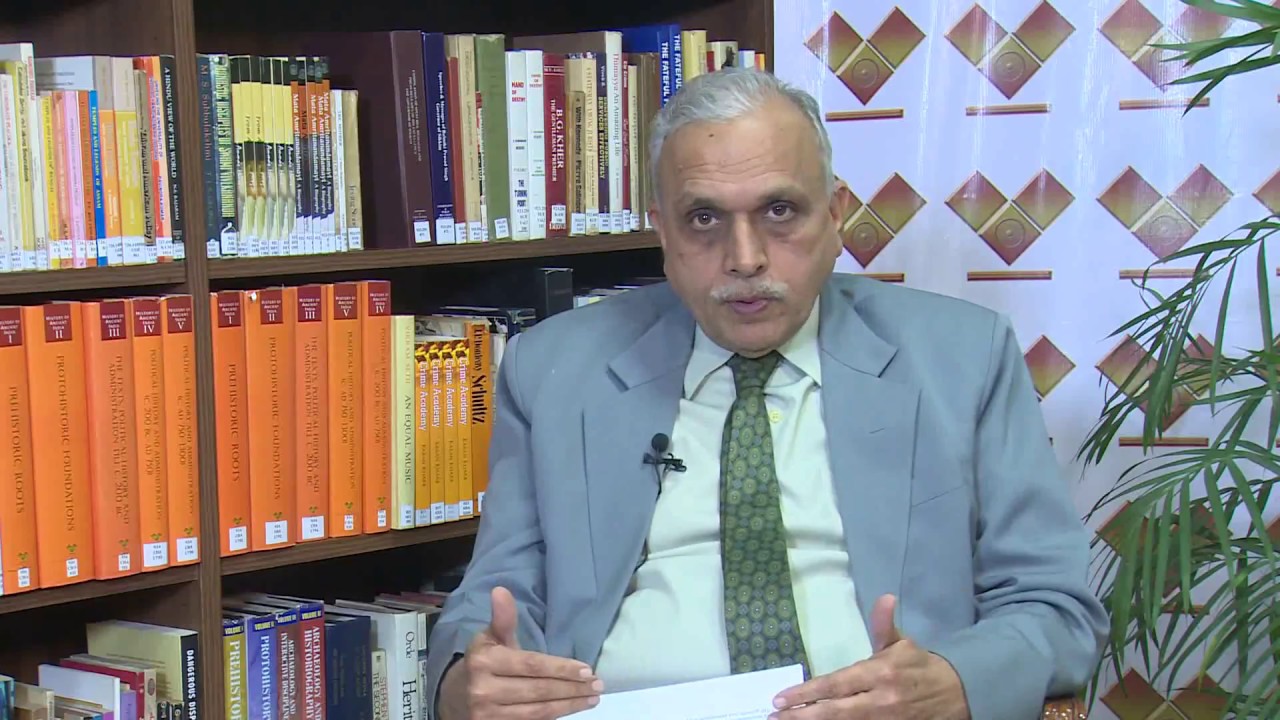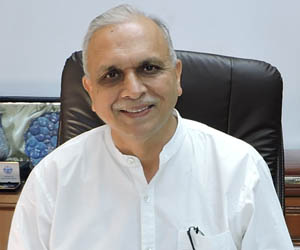(The following is an updated version of Director’s talk on Internal Security given at Defence Services Staff College, Wellington on 06 Mar 2023)
Introduction
In the holistic concept of national security, internal security is an extremely important part of the country’s overall national security matrix.
The internal security environment in India is highly complex and challenging. It is impacted by the external as well as domestic environment. Historical factors also influence internal security. Yet it is to the credit of India and the Indian people that none of the security challenges has overwhelmed the country. Despite these challenges, India has become stronger and today is looking towards becoming a middle-income country and also a major player in global affairs.
The instability created by the partition would have destabilized India, which is highly diverse and varied. Many of our problems can be traced to the partition. Yet, India has retained its unity and emerged as a strong country. While the challenges on the internal security front remain and cannot be underestimated, the country is confident that this can be handled. While there is no room for complacency, the country is confident that despite the complexity, these challenges can be handled through a combination of sound policies and institutional capacity.
Challenges to Internal Security
Since its independence, India has raised numerous insurgencies in different parts of the country, particularly in Jammu and Kashmir, the North East and Central India, Khalistan, cross-border infiltration, terrorism, organised crime, human trafficking, drug trafficking, inflow of refugees, interstate disputes, natural disasters, pandemic, disinformation campaigns, mass protests etc. Today, the rise of social media, dark net, crypto currency has given rise to new challenges.
External Security Environment and Internal Security
External security environment is dynamic. It has a salutary impact on India’s internal security. External factors are usually not in India’s control. We have to deal with them through better intelligence, improved capabilities and focussed international cooperation. Some examples:
- Cross-border terrorism, radicalization
- Illegal migrations and refugees (i.e. Sri Lanka, Bangladesh, Myanmar etc)
- Drugs and arms smuggling (Af-Pak)
- Cyber space (Dark net)
- Illegal activities on the high seas- proliferation, fishing.
- Instability in the neighbourhood (Pakistan, Afghanistan, Myanmar etc).
State Response
Over the years, the governments have paid a great deal of attention to dealing with internal security challenges. For instance, the government’s focus on counterterrorism has grown enormously since the 2008 Mumbai terror attacks
The abolition of article 370 has been a landmark development in J&K. It has created opportunities in Jammu and Kashmir where the incidents of terrorism have gone down.
By a combination of prudent policies aimed at fighting insurgents, focusing on development, reaching agreements with insurgent groups and deft diplomacy, the government has been able to bring insurgency in the Northeast under control and ushering in a new era of development. Northeast is undergoing a multidimensional transformation.
A well thought out strategy, improved coordination, focus on development, building of the capabilities of the Central Armed Police Forces (CAPF) in dealing with extremism has yielded positive result in dealing with Left Wing Insurgency.
The number of communal incidents has come down over the years.
India has 15000 Km of land borders in difficult and diverse terrain. Boundaries with China and Pakistan are unsettled. The borders are prone to drugs and arms smuggling.
Significant resources have been spent on improving border management. Focus is on not only on building border fencing but also on improving the development in the border regions and attending to the needs of the border populations and connectivity.
Maritime security, particularly coastal security, has received great attention in recent years, particularly since the Mumbai attacks. Attention has been given to fishermen and improving their livelihoods, strengthening coastal police, strengthening interstate coordination, improving the capabilities of the Indian Coast Guard, and strengthening coastal surveillance,
Tackling internal security challenges requires institutional approach. The numerous institutions dealing with the internal security issues – police, the Central Armed Police Forces, the Courts again have been equipped with greater resources, technology, improved training, welfare measures etc period. There has also been an increased focus on research, training, education, skills, welfare and coordination. Special attention has been given to cybercrime, preventing atrocities against women and dealing with new age crimes.
Ministry of Home Affairs is the nodal agency; with a budget of nearly 200,000 Cr (2023-24) that it spends on CAPFs. The combined strength of CAPFs is about a million. In addition, each state has a police force:

Key Acts
In a democratic set up, all actions of the state have to be in accordance with the constitution and the prevailing law. A number of Acts give the power to the agencies for their work. Some of these are; Indian Penal Court, CRPC. UAPA, National Security Act, PMLA, IT Act, NIA Act, MOCOCA, NDPS, and Official Secrecy Act etc.
Key Institutions and Agencies
Tackling internal security challenges requires political will, legal framework, correct policies, strong institutions, coordination, and implementation.
The present government is committed to dealing with security challenges with a firm hand. This is reflected in recent developments like dealing with anti-CAA protests with a firm hand, abolition of Article 370, banning of the Popular Front of India (PFI), zero tolerance towards terrorism etc.
Key institutions involved in internal security are as follows:
- Ministry of Home Affairs, with a budget of nearly 200,000 Cr (2023-24) is the nodal agency for internal security. It has several departments and agencies. Special Secretary level officer is the in-charge of internal security.
- Intelligence Bureau, set up by the British in 19th century, is the premier agency for collecting intelligence on internal security matters. It is a highly professional and well-regarded agency. DIB is conventionally the senior most police officer in the country. He has direct access to the Minister of Home Affairs, the Prime Minister and the National Security Advisor.
- Research and Analysis Wing (R&AW) is the primary agency responsible for collecting intelligence for national security from external sources. It shares information with other agencies as required. IB and R&AW work in coordination with each other as also with other agencies.
- The National Technical Research Organisation (NTRO) is the nodal agency for technical Intelligence. Its inputs are used by other agencies.
National Investigation Agency (NIA)
The National Investigation Agency has emerged as the Government of India's leading federal agency for investigating terrorism in the country. The agency’s powers are derived from the NIA Act of 2008, and it is involved in investigations of terrorism cases with cross-state connections, illicit trafficking, and other activities.
The National Investigation Agency (Amendment) Act 2019 establishes a national-level agency to investigate and prosecute specified offences (scheduled offences). Furthermore, the Act provides for the establishment of Special Courts for the trial of scheduled offences. The amendment allows the agency to investigate the following new offences as well:
- Human trafficking,
- Counterfeit currency or bank notes related offences,
- Sale or manufacture of prohibited arms,
- Offences under the Explosive Substances Act, 1908, and
- Cyber-terrorism
The amendment also broadens the NIA’s jurisdiction. It now has the authority to investigate offences committed outside Bharat that are subject to international treaties and domestic laws of other countries. A Terror Funding and Fake Currency (TFFC) unit has been established in the NIA to conduct investigations of terror funding and Fake Indian Currency Notes (FICNs) cases.
In 2022, the NIA registered 73 cases as compared to 61 cases in 2021. It is the highest number of cases registered by the NIA since its inception after 26/11 Mumbai terror attacks. Out of 73 cases, 35 are linked to Islamic extremism in various States such as Jammu and Kashmir (J&K), Assam, Bihar, Delhi, Kerala, and Madhya Pradesh. As one of the biggest operations against PFI (Popular Front of India), since September 2022, the NIA raided around 200 locations in country and arrested 100+ people associated with the proscribed group— PFI.
Multi-Agency Centre
The Multi-Agency Centre (MAC) has been strengthened by the Ministry of Home Affairs (MHA) to allow it to operate 24x7 for the collection and sharing of security-related information. According to data from the MHA's Annual Report 2021-2022, MAC shared 4,06,925 inputs until December 31, 2021. In June 2021, MAC launched a National Memory Bank (NMB) integrated with a Threat Management System (TMS) on the MAC-SMAC-State SB Network. Around 30,991 data points in the form of periodicals, dossiers, incident reports, and so on have been uploaded to the NMB.
National Intelligence Grid
The National Intelligence Grid (NATGRID) created as an IT platform to assist the security and law-enforcement agencies to counter terror for national security. To monitor terror activities and serve national security interests, the NATGRID will link several databases including railways, police, stolen vehicles, immigration, airline, passports, vehicle ownership, driving licenses, PAN data, and etcetera. NATGRID has developed NATSTAR connectors with indigenous resources and has been operationalized by connecting 11 User Agencies (UAs) and 10 Providing Organisations (POs).
Combating Financing of Terrorism
The Combating Financing of Terrorism (CFT) Cell at the MHA deals with the policy matters on CFT and FICN (Fake Indian Currency Notes). The FICN Coordination Group (FCORD) shares intelligence among security agencies of the Centre/State to counter problem of FICN. Since June 2010, Bharat is a member of Financial Action Task Force (FATF) and also a member of FATF Styled Regional Bodies (FSRBs), such as Eurasian Group (EAG) and Asia Pacific Group (APG).
States have raised Special Forces, Anti-Terrorism Squad (ATS) to deal with terrorism incidents, and also Central Armed Police Forces (CAPFs) & National Security Guards (NSG) have been stationed at various locations to assist the States.
Khalistan-inspired Extremism in Punjab
The recent incident of Ajnala police station in Amritsar in Punjab and escalated pro-Khalistan sentiments in Punjab are raising widespread fears of a return to the horrific 1980s, when a Pakistan-sponsored insurgency wreaked havoc on the government and inflicted great suffering on the populace.
The proscribed organisation— Sikh For Justice (SFJ) has been taking advantage of the fragile Law & Order situation under the governing State government and playing with the sentiments of the Sikh Diaspora overseas, with the backing of Pakistan’s Inter-Service Intelligence (ISI) Directorate. The problematic Law & Order scenario that now exists in Punjab provides a platform for pro-Khalistan terrorists like Gurpatwant Singh Pannu and his Sikh for Justice (SFJ) organisation, Simranjit Mann and Amritpal Singh (head of Waris Punjab De), among many others, who are being given money to keep the fires burning.
Drug-Trafficking in Punjab
Effortlessly working on its “K2—Khalistan and Kashmir” theory against Bharat, Pakistan’s ISI Directorate gives orders to members of organised crime or drug dealers to transfer narcotics through Punjab border. As of now, the ISI-affiliated drug traffickers throw the parcels with illegal drugs over the border fence in regions where infiltration is not thought to have taken place, and their counterparts on this side of the border pick up the assignment later.
The Border Security Force (BSF) personnel have frequently found and seized drug packages along with Bharat-Pakistan International Border in Punjab sector. According to the data presented before the Lok Sabha (the Lower House of the Parliament) in December 2022, over 486.2 kg of narcotic drugs, including hemp, heroin, and opium, was found along the Bharat-Pakistan International Border (IB) in Punjab in 2021.
Drone Infiltrations
Coupled with the issue of drug trafficking in Punjab, there is also a security risk posed by the growing number of drone sightings near the Bharat-Pakistan International Border. According to information on drone infiltration, the BSF discovered 171 drones infiltrating the Punjab sector of the IB between January and September 2022. Drones deliver narcotics, small guns, and ammunition; claim the BSF and State police troops. Drones have dropped packets of heroin from Afghanistan on multiple occasions for the illegal drug trade and to finance terrorism in J&K and Punjab.
Left-Wing Extremism
In Bharat, Left-Wing Extremism also known as Naxalism, carried out attacks on security forces and civilians. The extremist activities are led by the banned Communist Party of India (Maoist) or CPI (Maoist). The Unlawful Activities (Prevention) Act [UA (P)[A], 1967, prohibits the CPI (Maoist) group and all of its manifestations, and lists them all on the Schedule of Terrorist Organisations.
The “National Strategy and Action Plan to address LWE”, approved by the Government of India in 2015, calls for a multidimensional strategy that includes creating security measures, launching development projects, defending local residents’ rights, etc.
According to the recent data available, there were around 598 Naxal-related incidents in 2022 as compared to 676 incidents in 2021. The increased presence of security forces, better operations strategies, and welfare initiatives launched by the Central and State governments for people living in LWE-affected areas can all be linked to the decline in Naxal-related incidents.
There was a significant increase in the number of Maoists who gave up arms in 2022—2,853 as compared to 533 in 2021, with a leap of over 435 per cent. The rise in Maoists coming forward and surrendering themselves serves as an example of the effective operational strategies being employed locally to further persuade “brainwashed” Maoists to quit violence and join welfare programmes for the betterment of society.
North-East Insurgency
Using a variety of measures, the Central government supports the state governments’ attempts to counter insurgency in the North-Eastern states. In contrast to the 509 incidents reported in 2021, around 319 incidents were reported in 2022. The Central government’s major and effective approach to managing the challenging problem of insurgency in the North-East region is highlighted by the lowering rate of insurgency.
Some insurgent groups give up their weapons and seek peaceful solutions by integrating into society as a result of the policy of discussions with insurgent groups. Several insurgent groups have given up and integrated into society as a result of the Ministry of Home Affairs’ (MHA) various welfare schemes. Over 1,552 militants gave themselves up in 2022 compared to 1,146 the year before.
Popular Front of India
Under the strict UA (P) Act, the Indian government outlawed the Popular Front of India (PFI) and its affiliated organisations on 27-28 September 2022, for a period of five years. It was discovered that the PFI aimed to stir religious hatred throughout the country and has ties to foreign terrorist groups like Islamic State (IS).
The prohibition took effect following a prior pan-Bharat crackdown on the organisation. The PFI was added to the list of organisations prohibited by the UA (P) Act along with the Rehab India Foundation (RIF), Campus Front of India (CFI), All India Imams Council (AIIC), National Confederation of Human Rights Organization (NCHRO), National Women's Front (NWF), Junior Front (JF), Empower India Foundation (EIF), and Rehab Foundation, Kerala.
Seven State Executive Committee members, 07 PFI Zonal Heads, and 15 PFI physical education instructors had their residences searched by the NIA. The NIA officials raided locations and seized digital gadgets, damning materials, and sharp-edged weapons. The search activities were a component of a probe into the organisation’s funding of and participation in terrorism and money laundering. The inquiry is still being conducted.











Post new comment